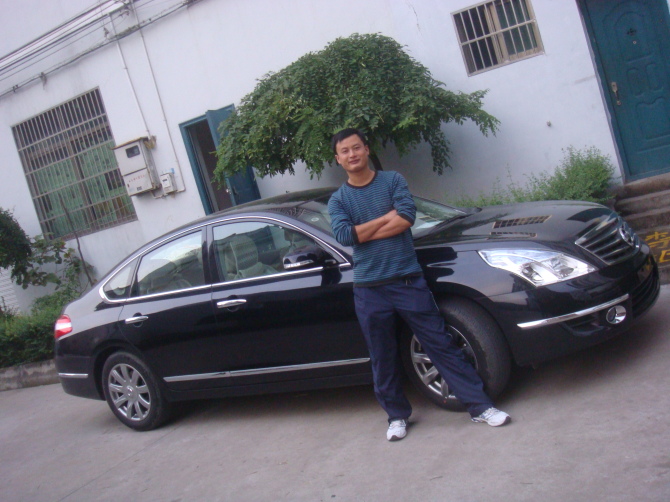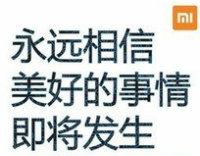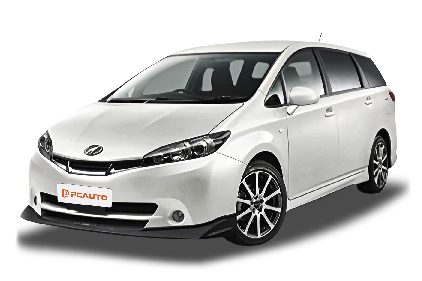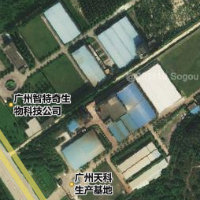Q
Which is better between Toyota Wish and Honda Stream?
Both the Toyota Wish and the Honda Stream are popular seven-seater MPV models in the Malaysian market, each with its own advantages. The Toyota Wish is renowned for its reliable quality and low maintenance costs. It is equipped with 1.8L or 2.0L engines, offering smooth power and good fuel economy, which makes it suitable for daily family use. Its interior design leans towards practicality, and the space layout is flexible.
On the other hand, the Honda Stream focuses more on the sense of sportiness and driving experience. It also offers 1.8L and 2.0L engine options, but the tuning is more inclined towards power response, giving it a slight edge in handling. The interior design is also more youthful.
Both models have high resale values in the second - hand market. However, the Toyota Wish has a more widespread parts supply, making it a bit more convenient to repair. If you value durability and economy, the Wish is a safe choice. If you prefer driving pleasure and stylish design, the Stream might be more suitable.
It's worth noting that both vehicles have been discontinued, but the second - hand market remains active. When purchasing, it is recommended to check the vehicle's condition and maintenance records and consider the local after - sales support network. For Malaysian users, the efficiency of the air - conditioning system and its long - term weather resistance in the hot climate are also key points to consider when choosing a car.
Special Disclaimer: This content is published by users and does not represent the views or position of PCauto.
Related Q&A
Q
How much fuel does a Toyota Wish use per km?
The fuel consumption of the Toyota Wish varies depending on the model year, engine displacement (such as 1.8L or 2.0L), and driving conditions. According to actual data, the combined fuel consumption of the 1.8L model is around 0.08 to 0.10 Malaysian Ringgit per kilometer (approximately 6.5 to 8.0 liters per 100 kilometers based on the current oil price). The 2.0L model has slightly higher consumption, about 0.10 to 0.12 Malaysian Ringgit per kilometer (8.0 to 9.5 liters per 100 kilometers).
The actual fuel consumption may be affected by road conditions, air - conditioning usage, and driving habits. For example, frequent rapid acceleration or traffic congestion in the city can significantly increase fuel consumption. It is recommended that car owners perform regular maintenance (such as replacing air filters and spark plugs) and maintain proper tire pressure to optimize fuel efficiency.
The oil price in Malaysia fluctuates greatly. You can refer to the fuel consumption test data published by MyJPJ or SPAD. Hybrid models are usually more fuel - efficient, but Toyota has not launched a hybrid version of the Wish. If you are considering energy - saving options, you can compare models in the same class, such as the Honda Jazz Hybrid or the Toyota Corolla Cross Hybrid.
Q
How many trims does the Toyota Wish have?
The Toyota Wish is available in three trim levels: the 2017 Toyota Wish 2.0L Z, the 2017 Toyota Wish 1.8L X, and the 2017 Toyota Wish 2.0L G. While these trims share many core features, there are some differences in specific details. For instance, the 2.0L Z weighs 1,420 kg, the 1.8L X weighs 1,340 kg, and the 2.0L G weighs 1,380 kg. In terms of seating capacity, the 2.0L Z offers six seats, whereas the 1.8L X and 2.0L G provide seating for seven. The body dimensions also vary slightly: the 2.0L Z measures 1,745 mm in width and 1,600 mm in height, while the 1.8L X and 2.0L G are 1,695 mm wide and 1,590 mm high.
Despite these differences, the three trims share several key specifications. All versions feature a CVT transmission, front-wheel drive, and an official combined fuel consumption of 6.9 L/100 km. Additionally, each model comes equipped with a comprehensive range of safety and convenience features.
Q
What is the maintenance schedule for Toyota Wish?
It is recommended that the Toyota Wish undergo regular maintenance every 6 months or every 10,000 kilometers, whichever comes first. This is the standard set by Toyota officially for the tropical climate and road conditions in Malaysia. Basic maintenance includes changing the engine oil and oil filter, inspecting the brake system, tire condition, and chassis components. Meanwhile, the air - conditioning filter needs to be cleaned or replaced regularly to cope with the hot and humid environment. The transmission fluid and brake fluid should be checked every 20,000 kilometers. It is advisable to replace the spark plugs and coolant at 40,000 kilometers, and special attention should be paid to the wear of the timing belt or chain at 60,000 kilometers. For Malaysian users, it is especially recommended to shorten the replacement cycle of the air filter, as the dusty environment will accelerate its clogging. It should be noted that the battery pack cooling system of the hybrid version of the Wish requires additional inspection, which is different from that of ordinary fuel - powered vehicles. Strictly following the maintenance manual can not only extend the vehicle's lifespan but also maintain fuel economy. Especially in the frequently congested road conditions in Malaysia, regular maintenance is particularly important for maintaining engine efficiency. If you often drive in coastal areas, you should also increase the frequency of chassis anti - rust inspections, as sea breezes can accelerate the corrosion of metal parts.
Q
How much engine oil does a Toyota Wish require?
The oil capacity of the Toyota Wish depends on the specific year and engine model. Take the common second - generation models from 2009 to 2017 in Malaysia as an example. The version equipped with the 2.0L 3ZR - FE engine usually requires about 4.2 liters of oil (including oil filter replacement), while the 1.8L 2ZR - FE engine needs around 3.8 liters. When actually adding oil, you should refer to the oil dipstick scale. It is recommended to use 5W - 30 fully synthetic oil that meets the API SN standard or higher.
It's worth noting that in Malaysia's tropical climate, you can consider using oil with a slightly higher viscosity, such as 5W - 40, to enhance high - temperature protection. However, you need to follow the suggestions in the original factory manual. Regular oil changes are crucial for engine maintenance. Generally, the oil needs to be changed every 5,000 to 10,000 kilometers or every 6 months. If you often drive short distances or idle for long periods, you should shorten the maintenance cycle. At the same time, I'd like to remind car owners to look for the JASO or ILSAC certification marks when purchasing oil to ensure the quality.
Q
What is the best engine oil for Toyota Wish?
For the Toyota Wish, the most suitable engine oils are 5W - 30 or 10W - 30 fully synthetic oils that meet Toyota's original factory standards. These two viscosities can provide excellent lubrication performance and fuel economy under Malaysia's climatic conditions. In particular, the high - temperature stability and oxidation resistance of fully synthetic oils are more suitable for tropical climates, and they can also extend the engine's service life. If the vehicle has high mileage (over 100,000 kilometers), you can consider using high - mileage oils such as 5W - 40 or 10W - 40 to provide better sealing. When choosing engine oil, make sure the product has API SN or SP certification and meets the ILSAC GF - 6 standard. These labels indicate that the oil has reached the current highest international performance standards.
It's worth noting that the oil change interval for the Toyota Wish is generally every 5,000 to 10,000 kilometers or 6 months, depending on driving conditions and the type of oil. Vehicles that often drive in congested urban traffic are recommended to shorten the change interval. Additionally, the quality of the original factory oil filter is more reliable, so it is recommended to replace it when changing the oil. Understanding this knowledge can not only help you better maintain your beloved car but also avoid engine wear problems caused by using improper oil.
Q
What are the advantages of the Toyota Wish?
As a classic 7-seater MPV, the Toyota Wish is highly popular among family users in the Malaysian market. Its advantages mainly lie in practicality and reliability. The spacious and flexible cabin space, combined with the foldable third-row seats, can easily meet the needs of family outings or cargo transportation. The 1.8L and 2.0L Dual VVT-i engines strike a balance between fuel economy and power performance, making them suitable for Malaysia's diverse road conditions.
In addition, Toyota's well-established after-sales service network in the local area and the high resale value of its used cars have also reduced the long-term usage cost. It's worth mentioning that the air - conditioning cooling efficiency of MPV models is particularly important in Malaysia's hot climate, and the Wish's independent rear - row air - conditioning vents are designed with this in mind.
Although there are more new models emerging in the market today, the Wish, with its time - tested durability, remains a practical choice for budget - conscious families. It is especially suitable for users who need to pick up and drop off children frequently or run small businesses.
Q
What type of car is the Toyota Wish?
The Toyota Wish is a sporty MPV. This type of vehicle combines the spatial flexibility of an MPV with the driving experience of a sports car, offering users a unique driving option. The Toyota Wish has a length of 4,590mm, a width ranging from 1,695 to 1,745mm, a height between 1,590 and 1,600mm, and a wheelbase of up to 2,750mm. Its size design makes the interior space spacious and practical. It comes in a 5-door layout with either 6-seat or 7-seat configurations. The rear seats are split and foldable, meeting different needs for passenger-carrying and storage during travel. In terms of power, it offers a choice between 1.8L and 2.0L gasoline engines, paired with a CVT transmission and front-wheel drive, ensuring smooth power delivery during daily driving. Regarding safety features, it is standardly equipped with systems such as ABS anti-lock braking, lane departure warning, and active braking, along with 8 airbags, providing reliable safety protection for both drivers and passengers.
Q
What is the safety rating of the Toyota Wish?
The Toyota Wish performs averagely in safety ratings. According to past test records, this model has achieved above-average results in safety assessments in some regions. However, the specific ratings may vary depending on different testing agencies and model years. In the Malaysian market, the Toyota Wish is favored by many family users for its practical space and reliability. It should be noted, though, that earlier models may not be equipped with the latest active safety technologies, such as automatic emergency braking or lane-keeping assist. For safety-conscious consumers, it is recommended to thoroughly understand the safety equipment of the specific year and configuration before purchasing. You can also refer to the data of regional safety evaluation institutions like ASEAN NCAP. The road conditions in Malaysia are diverse. Whether you're driving in the city or on a long trip, it's extremely important to choose a vehicle with good safety performance. Besides paying attention to crash ratings, daily vehicle maintenance and safe driving habits should not be ignored either.
Q
Does Toyota Wish have a timing belt or chain?
The models of the Toyota Wish launched in the Malaysian market are mainly equipped with 1.8 - liter and 2.0 - liter gasoline engines. Both of these two engines adopt the timing chain design instead of the timing belt. The advantage of the timing chain is that it has a longer lifespan. Usually, it can last for the entire life cycle of the engine without replacement, which reduces the long - term maintenance cost. On the other hand, the timing belt needs to be regularly inspected and replaced at around 60,000 to 100,000 kilometers to avoid the risk of breakage. For Malaysian car owners, the timing chain is more suitable for the local hot and rainy climate because it has better resistance to high temperatures and humidity. However, it is still recommended to regularly check whether the chain tensioner is working properly. It should be noted that although the chain is maintenance - free, if the engine makes abnormal noises (such as metal friction sounds), it should be repaired in time, which is the same for all models with chain - driven systems. In addition, car owners can further confirm the specific configuration through the vehicle manual or the markings in the engine compartment. There may be slight differences in the Wish models of different years.
Q
How fast is Toyota Wish?
The Toyota Wish is a popular 7-seater MPV in Malaysia. Its power performance depends on the specific model and engine configuration. The early models are equipped with 1.8-liter or 2.0-liter naturally aspirated engines. The 1.8-liter version has a maximum horsepower of about 132 hp, while the 2.0-liter version can reach about 141 hp. It takes about 10-12 seconds to accelerate from 0 to 100 km/h, and the top speed is about 180-190km/h. It's suitable for family use. Although it's not known for its sporty performance, the smooth CVT transmission and comfortable suspension tuning make it perform well in city driving and long-distance trips. It's worth noting that the design of this kind of MPV focuses more on space utility and fuel economy rather than ultimate speed. For Malaysian consumers, the reliability and low maintenance cost of the Wish are also important reasons for its popularity. If you have higher requirements for performance, you can consider the sporty models of the same brand. But as a family car, the Wish strikes a good balance between power and practicality.
Latest Q&A
Q
What is a 2020 VW Passat worth?
In 2020, the second - hand car prices of the Volkswagen Passat in Malaysia were approximately between RM90,000 and RM130,000. The specific value depends on factors such as the vehicle's condition, mileage, configuration version, and maintenance records. For example, the price difference between the entry - level version equipped with a 1.8 TSI engine and the high - end 2.0 TSI version can be up to RM30,000. Usually, for each additional year of the vehicle's age or every 10,000 kilometers exceeded in mileage, the price will decrease by 5% to 8%.
It's worth noting that as a German mid - size sedan, the Passat has a better resale value in the second - hand market than some Japanese competitors. This is due to its solid chassis tuning and the reliability of the EA888 engine. At the same time, it is recommended that buyers give priority to vehicles with complete original - factory maintenance records and pay attention to checking the shifting smoothness of the 7 - speed DSG transmission. Such details will significantly affect the long - term use cost. In Malaysia's hot climate, special attention should also be paid to the aging of rubber parts. Regularly replacing the coolant and transmission oil can effectively extend the vehicle's service life.
Q
Is a 2020 VW Passat a good car?
The 2020 Volkswagen Passat is a model worth considering in the Malaysian market. It has won the favor of many consumers for its comfort, practicality, and reliable performance. This car is equipped with a 1.8-liter or 2.0-liter turbocharged engine, which provides smooth power output and good fuel economy, making it suitable for both city driving and long-distance travel in Malaysia.
The interior design is simple yet elegant. The materials used are of high quality, and the space is quite roomy. In particular, there's plenty of legroom in the back row, which makes it perfect for family use. In terms of technology features, it comes with an 8-inch touchscreen, Apple CarPlay, and Android Auto, enhancing the convenience of daily use.
Safety is also one of the Passat's strong points. It comes standard with a number of active safety technologies, such as automatic emergency braking and blind-spot monitoring. In Malaysia, Volkswagen has a relatively well - established after - sales service network, so maintenance is relatively convenient.
It should be noted that as a German - made car, the prices of its spare parts may be slightly higher than those of Japanese cars. However, its overall quality and durability are excellent. For Malaysian consumers who value comfort and practicality, the 2020 Passat is a great choice. It is recommended to compare it with Japanese or Korean models in the same class before making a purchase and make a decision based on your own budget and needs.
Q
How big is the trunk of the Passat 2020?
The 2020 Volkswagen Passat has a trunk capacity of 586 liters. This space is more than ample for daily use or family outings. It can easily hold multiple suitcases or large items, which suits the Malaysian consumers' preference for long - distance travel and their relatively high demand for shopping. If you need to expand the space, the rear seats can be folded down in proportion, further enhancing the storage flexibility and making it convenient to carry longer items like golf clubs or camping gear.
In Malaysia's hot and rainy climate, the Passat's trunk design also takes practicality into account. The interior is flat and the opening is large, facilitating the loading and unloading of items. Among cars in the same class, the Passat's trunk performance is above average, balancing comfort and practicality. It's a great option for users who value space and versatility.
Moreover, the Passat's trunk is equipped with useful anchor points and storage features, which make it easy to secure items or store small things in an organized way. These little details can bring a lot of convenience in daily use.
Q
What gas does a 2020 Passat take?
The 2020 Volkswagen Passat is recommended to use RON 95 unleaded gasoline in the Malaysian market. This is the most common and cost - effective fuel choice in Malaysia, which can fully meet the daily needs of the 1.8 TSI or 2.0 TSI turbocharged engines of this model, and it also complies with local fuel standards and vehicle design specifications. If you're after better performance, you can also opt for RON 97 unleaded gasoline. Its higher octane rating can optimize the engine's anti - knock performance under high - load conditions. However, it should be noted that Malaysia uses a floating oil price mechanism, and the cost of RON 97 is significantly higher than that of RON 95.
It's worth mentioning that all gasoline in Malaysia is required to have detergents that meet EURO 4M standards or higher, which can effectively keep the fuel system clean. Car owners don't need to buy additional fuel additives. For turbocharged models, it's advisable to regularly check the status of the high - pressure fuel pump and injectors at authorized service stations, as these direct - injection engines are quite sensitive to fuel quality.
In addition, there may be differences in fuel supply between the Malaysian Peninsula and some remote areas in East Malaysia. Before a long - distance self - drive trip, you can check the distribution of gas stations through the MyEG or Petronas apps.
Q
What kind of oil does a 2020 Passat use?
For the 2020 Volkswagen Passat in the Malaysian region, it is recommended to use synthetic engine oil that meets the VW 502 00 or VW 504 00 standards. The viscosity is usually 5W - 30 or 5W - 40. The specific choice needs to be adjusted according to the driving environment and climate conditions. In hot climates, 5W - 40 can be given priority to provide more stable high - temperature protection.
Malaysia has a hot and humid climate. It is recommended that car owners change the engine oil regularly every 10,000 kilometers or 12 months (whichever comes first), and ensure that the vehicle is serviced at an authorized dealership or a certified repair center to maintain the validity of the warranty.
It should be noted that if the vehicle is equipped with a GPF (Gasoline Particulate Filter), low - ash engine oil (such as those meeting the VW 504 00 standard) must be used to avoid clogging. The quality of the engine oil directly affects the engine's lifespan and fuel efficiency. It is recommended to choose well - known brands like Castrol, Shell, or Liqui Moly, and select products that are VW - certified. Also, regularly check the engine oil level, especially before long - distance trips.
If you often encounter congested traffic or engage in high - intensity driving, you can appropriately shorten the oil change interval to 8,000 kilometers to optimize protection.
View MoreRelated News

Toyota Mystery Project teaser sparks speculation, Akio Toyoda personally involved in teaser process
JamesOct 2, 2025

Rumor: Toyota and Mazda collaborate to develop the next-generation MX-5 and GR86
AshleySep 30, 2025

Toyota Corolla Cross mid-term facelift in China, featuring a new front face and interior design
AshleySep 29, 2025

There is news that the next-generation Toyota Hilux will be released in November, bringing a major redesign.
MichaelSep 28, 2025

Toyota HiAce and Mitsubishi Outlander upgraded to receive five-star safety rating
WilliamSep 24, 2025
View More

















Pros
Cons